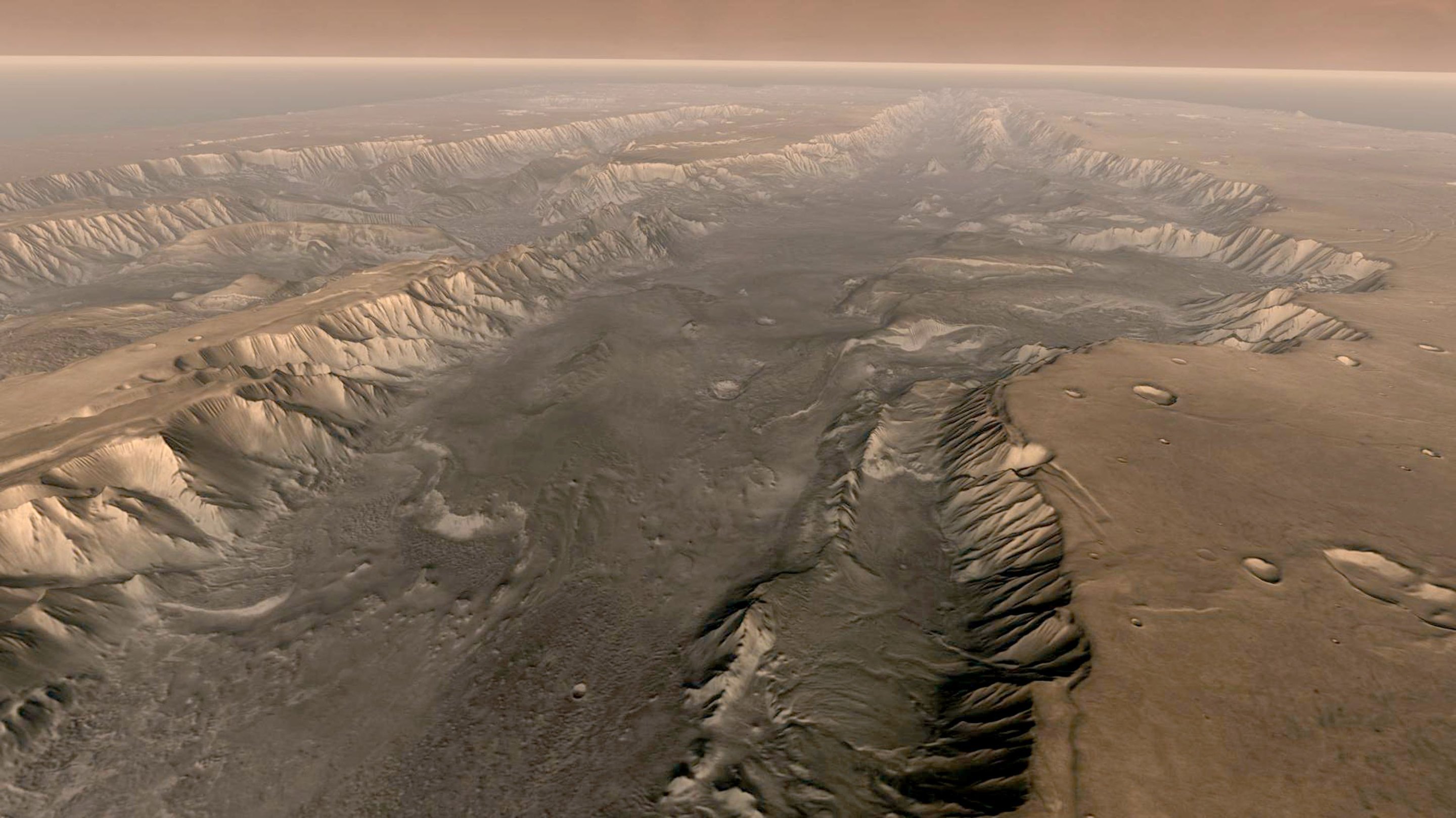If you were to have looked at Mars 3.5 billion years ago, you might have seen a wet planet. A blue planet. A vast ocean covered a third of Mars; mighty rivers drained the highlands, flowing into complex and voluminous deltas; lakes and seas dotted the surface. If you were to have looked at Mars a mere 20 million years ago, you might still have seen flowing water in some low-lying areas.
Mars today is an arid planet, its temperature and atmospheric pressure inimical to the existence of liquid water: warming ice would instantly sublime into vapor, and vice versa. But we know water once flowed, because the evidence is everywhere and visible to the naked eye: dry river valleys, stratified lakebeds, barren outflow channels complete with former islands.
This water did not just disappear. (Though we snagged a very small part of it, brought to Earth in Martian meteorites.) The water is still there on Mars, in the form of large deposits of solid ice below the surface. And not just a little bit. Just this week, scientists announced the discovery of an ice deposit on Mars's equator with enough frozen water that, if it melted, would cover the entire planet to an average depth of at least five feet.
The Medusae Fossae Formation has long been known, but somewhat mysterious. Theorized to be volcanic in origin, it is on the surface an enormous pile of dust some thousands of miles long; it is the primary source of dust for the huge dust storms that seasonally scour the planet. But what's under the dust? When the European Space Agency's Mars Express probe surveyed Medusae Fossae 15 years ago, it saw vast deposits of something, stretching more than two miles deep. Was it just dust all the way down? Nope, according to new radar data from Mars Express:
Initial observations from Mars Express showed the MFF to be relatively transparent to radar and low in density, both characteristics we’d see from icy deposits. However, scientists couldn’t rule out a drier possibility: that the features are actually giant accumulations of windblown dust, volcanic ash or sediment.
“Here’s where the new radar data comes in! Given how deep it is, if the MFF was simply a giant pile of dust, we’d expect it to become compacted under its own weight,” says co-author Andrea Cicchetti of the National Institute for Astrophysics, Italy. “This would create something far denser than what we actually see with MARSIS. And when we modelled how different ice-free materials would behave, nothing reproduced the properties of the MFF – we need ice.”
ESA
A lot of ice, too: enough that if melted would fill our Red Sea. It's the single biggest ice deposit found so far on Mars, though far from the first: All the frozen water discovered at the planet's poles and in middle latitudes are enough to flood the entire planet to a depth of more than 100 feet.
But Medusae Fossae is unique for a couple of reasons. First, we know a lot about how the deposit formed: from lava flows sometime within the last three billion years, and covered in volcanic ash which insulates it from the water-unfriendly surface conditions. Second, its location near the comparatively more temperate equator means that—very speculatively—it's more convenient to be tapped by future human habitations, which would likely need a native source of water.
Like any self-respecting Kim Stanley Robinson reader, I look forward to a distant, wet Mars. Swimming in Mars's invigorating seas! Dining upon delicious Mars oysters! Grumbling during my morning commute because it's Mars raining again! We don't need to wonder about where we'll get all that water; we must melt Mars!






